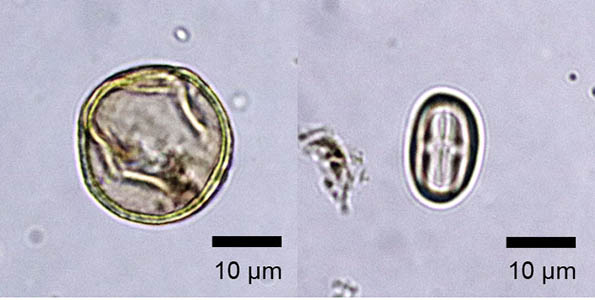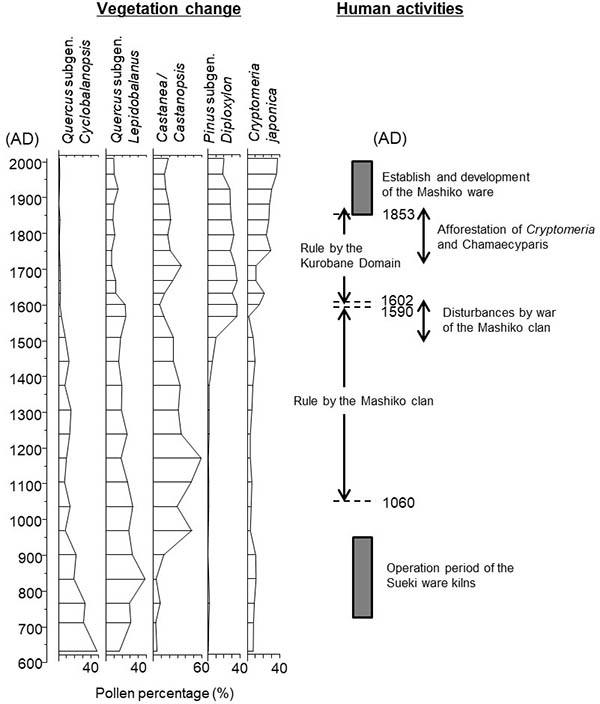Home > Research > Research Results > Research Results 2020 > The production of Sueki ware had a major impact on forests
Update:December 22, 2020
Main content starts here.
The production of Sueki ware had a major impact on forests
| Article title |
Vegetation change and human influence over the past 1400 years in the Mashiko area, the southern part of Tochigi Prefecture |
|---|---|
| Author (affiliation) |
Koji Shichi (a), Takashi Uchiyama (b), Shigeto Ikeda (c), Kunihiro Egami (d) (a) Shikoku Research Center, FFPRI, Kochi, Japan. (b) Chiba Keizai University, Chiba, Japan. (c) Center for Forest Restoration and Radioecology, FFPRI, Tsukuba, Ibaraki, Japan. (d) Chiba Keizai College, Chiba, Japan. |
| Publication Journal |
Japanese Journal of Palynology, 66(1), 1-14, 2020 |
| Content introduction |
The form of Japanese forests has undergone major changes, not only due to past climate fluctuations, but also due to past human activities. In order to understand the present composition of forest tree species and to accurately predict their future distribution, it is necessary to know the changes that have occurred in forests up to now, and the factors that have caused these changes. By examining the types and amounts of pollen samples (Photo) taken from the soil of Mashiko Town in Tochigi Prefecture, we revealed the changes in forests and the effects of human activities that have occurred over the past 1400 years (Figure). For 8 to 10 centuries, the production of Sueki (earthen) ware flourished in Mashiko, but large amounts of wood from Quercus subgen. Cyclobalanopsis and Q. subgen. Lepidobalanus trees were used to fire the kilns. As a result, it is estimated that these trees decreased and were replaced by trees of the species Castanea crenata. However, Mashiko Town is more famous for its Mashiko ware, the production of which began sometime in the 19th century. Since that time, almost no changes in species composition have been found. Thus, it is thought that compared with the production of Sueki ware which required large amounts of firewood, Mashiko ware could be produced with small amounts of firewood. Another factor may have been the increasing use of fossil fuels. It also became clear that besides pottery, different human activities during different ages, such as increases in Pinus subge. Diploxylon-type in conjunction with past militarization, and in Cryptomeria japonica in conjunction with the spread of silviculture, have led to major changes in the forests of the Mashiko area. The knowledge that has been acquired from this study will be useful for evaluating the effects that human activities have had on the formation of forests. It can also be utilized as basic material for predicting the future distribution of forests.
Photo:Optical microscope photographs of pollen from Quercus subgen. Cyclobalanopsis (left) and Castanea/Castanopsis (right) that was extracted from the soil. Electron microscope observations revealed that most of the Castanea/Castanopsis pollen was from Castanea crenata.
Figure:Changes in the main compositional taxa of forests in the Mashiko area that have exhibited changes in the proportion of pollen production, and the effects of human activities. During the time that wood-burning kilns were being used to produce Sueki ware, Quercus subgen. Cyclobalanopsis was replaced by Castanea crenata as the dominant tree species in the Mashiko area. |
Copyright © Forest Research and Management Organization. All rights reserved.


